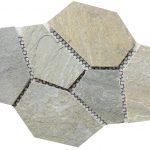Introduction
In the realm of interior design, the use of natural materials has always been revered for its ability to add warmth, texture, and character to living spaces. Cultured stone, also known as manufactured stone or faux stone, has gained popularity for its versatility, durability, and aesthetic appeal. Cultured stone offers a cost-effective alternative to natural stone while still providing the same visual impact. In this comprehensive guide, we will explore the use of cultured stone in living rooms, discussing its benefits, design possibilities, installation process, and maintenance requirements.
Benefits of Cultured Stone in Living Rooms
1. Aesthetics: Cultured stone offers a wide range of colors, textures, and shapes, allowing for endless design possibilities. Whether you prefer a rustic, traditional, or contemporary look, cultured stone can be tailored to suit your style preferences.
2. Durability: Cultured stone is highly durable and resistant to wear and tear, making it an ideal choice for high-traffic areas such as living rooms. It is also weather-resistant, making it suitable for both indoor and outdoor applications.
3. Cost-Effective: Cultured stone is more affordable than natural stone, making it a budget-friendly option for homeowners looking to achieve a luxurious look without breaking the bank.
4. Easy Installation: Cultured stone is lightweight and easy to install, saving time and labor costs compared to natural stone installation. It can be applied directly to drywall or existing surfaces, reducing the need for additional structural support.
Design Possibilities with Cultured Stone
1. Accent Walls: Cultured stone can be used to create stunning accent walls in living rooms, adding depth and visual interest to the space. Whether you opt for a single focal wall or multiple walls clad in cultured stone, the result is sure to make a statement.
2. Fireplace Surrounds: One of the most popular applications of cultured stone in living rooms is as a fireplace surround. Cultured stone can transform an ordinary fireplace into a focal point, creating a cozy and inviting atmosphere.
3. Built-In Shelving: Cultured stone can be used to create built-in shelving units or entertainment centers in living rooms. The textured surface of the stone adds a unique touch to the design while providing a durable and stylish storage solution.
4. Archways and Columns: Cultured stone can be used to embellish archways, columns, and other architectural features in living rooms, adding a touch of elegance and sophistication to the space.
Installation Process of Cultured Stone
1. Surface Preparation: Before installing cultured stone, the surface must be clean, dry, and free of dust and debris. Any existing finishes or paint should be removed, and the surface should be primed if necessary.
2. Application of Adhesive: A high-quality construction adhesive specifically designed for cultured stone should be applied to the back of each stone piece. The adhesive should be spread evenly to ensure proper adhesion.
3. Placement of Stones: Cultured stone pieces should be placed firmly onto the prepared surface in the desired pattern. Care should be taken to ensure uniform spacing and alignment for a professional finish.

4. https://www.fs-slate.com/ledgestone/ : Once the cultured stone pieces are in place, grout can be applied to fill in the gaps between the stones. Grout color can be chosen to complement or contrast with the stone, depending on the desired look.
5. Sealing: To protect the cultured stone and enhance its longevity, a sealant should be applied after the grout has cured. The sealant will help repel water, dirt, and stains, keeping the cultured stone looking pristine.
Maintenance Requirements of Cultured Stone
1. Regular Cleaning: Cultured stone can be cleaned with a mild detergent and water solution to remove dust, dirt, and grime. Avoid using harsh chemicals or abrasive cleaners that can damage the surface of the stone.
2. Sealing: Depending on the type of sealant used during installation, cultured stone may need to be resealed periodically to maintain its protective properties. Check the manufacturer's recommendations for the appropriate sealant and resealing schedule.
3. Avoiding Impact: While cultured stone is durable, it can still be chipped or damaged by heavy impacts. Take care when moving furniture or other objects near cultured stone surfaces to prevent accidental damage.
4. Repairing Damage: In the event of minor damage to cultured stone, such as a chip or crack, repairs can often be made using a patching compound designed for stone surfaces. For more extensive damage, consult a professional for repair options.
Conclusion
In conclusion, cultured stone is a versatile and aesthetically pleasing material that can enhance the beauty and functionality of living rooms. From accent walls to fireplace surrounds, built-in shelving to architectural features, the design possibilities with cultured stone are endless. By understanding the benefits, design possibilities, installation process, and maintenance requirements of cultured stone, homeowners can confidently incorporate this durable and stylish material into their living spaces, creating a welcoming and inviting atmosphere for family and guests alike.
